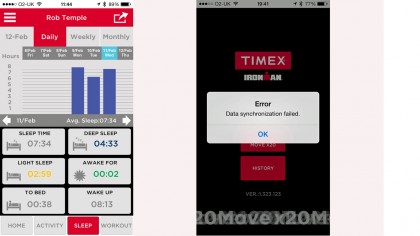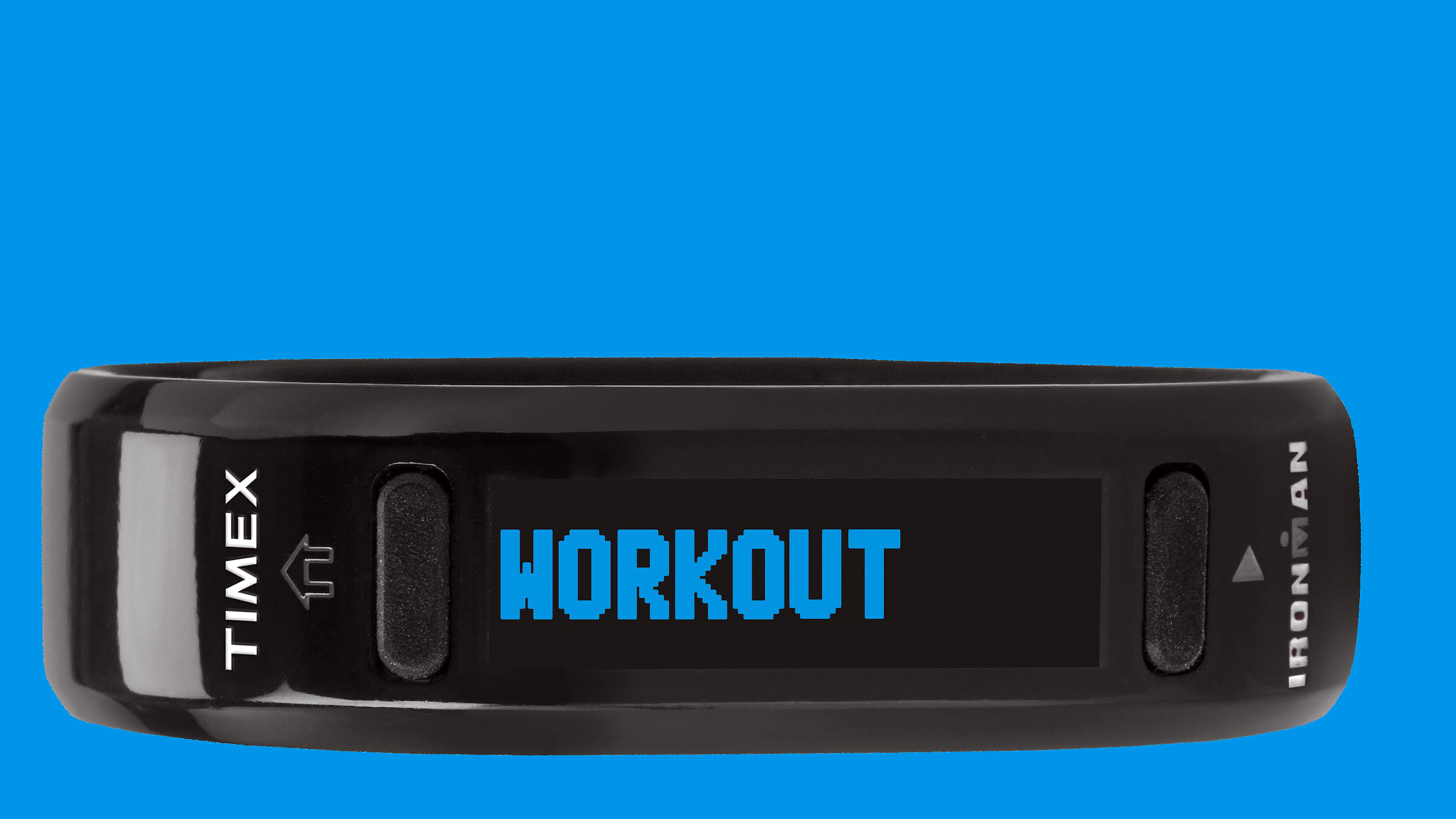Why you can trust TechRadar
Sleepy time
Onto sleep analysis. Now, anyone who's read some of the recent fitness tracker reviews we've posted will know what's coming, but if you haven't here's what's promised compared with what happens. What you're generally sold is the idea of analysing your sleep patterns in order to help you "sleep smarter" (Timex's words), so you can go on to "determine what diet and lifestyle choices have the most impact on the quality of your sleep". Great.
Now, what actually happens (and again, skip if you know what's coming): when you decide to go to bed, you lie down in your bed, and, in the Ironman's case, you click the home button three times to get to "SLEEP" mode, then hold down the play button and the band will say goodnight. Then in the morning, when you wake up you do the same again and the device says good morning.

Now you can go on your app and see the exact amount of time you've been lying down, with a graph of your sleep patterns. The first bit could be worked out simply by looking at your wall clock and noting it down with a pen, and the second bit might be handy if it bore any resemblance to your actual sleep and then helped explain what the pattern meant. But it doesn't. According to this device I tend to fall asleep within two seconds of lying down and then have solid sleep until I stand up again in the morning nearly 8 hours later - some of it light and some of it deep. Thanks.
Verdict
This is a band which is extremely simply to use and doesn't have many functions to get your head around. It counts steps, shows them on a bright, clear screen and then transports them without any hassle to a smartphone graph.
There's the usual calorie and sleep analysis data that should only be used as a very general guide to check whether your day is was more or less 'well' than the day before, and you can pick one up for under £100. Is it worth the investment?
We liked
Well, like I say, it's simple. The step counter was generally "accurate enough" for me. It's so hard recommending or warning off on the step counter performance though. If you walk differently to me, or wave your arms around a lot, you'll get different results. That's an issue that all fitness trackers have. All I can say is, I found this to be not too wrong, and it was consistent in the way it was wrong.
The battery life and the lack of buzzy pestering also stand the Timex Ironman Move x20 in good stead.
We disliked
The Timex Ironman Move x20 just wasn't all that comfortable or flexible to wear. They do come in a couple of sizes, so if you can try one of before you buy I'd recommend doing so. Lack of comfort is a fundamental problem with a band you're supposed to wear 24/7/365.
There's no touchscreen, but these aren't always the most responsive on these affordable bands, plus they don't really add much to the experience, so that's maybe no bad thing.
The app is a real problem. It's so simple as to seem unfinished, and there's little in the way of coaching or social interaction and, as far as I could work out, no third-party app integration. The whole product itself seems to be lacking in features, though the 'find your phone' mode and limited notifications are nice enough.
Verdict
For a device with the Ironman name, I expected more than a decent, basic pedometer. I wanted a device to get me moving and motivated after being ill, and it didn't really deliver. The generic looks and uncomfortable fit didn't make me feel inspired, and the very basic app almost drove me back to my bed. Where the sleep monitoring was all but useless.
Okay, at a push, for someone very non-techy, this might be a worthy purchase, but not at £100. You'd be much better off paying the extra £20 for the Fitbit Charge HR or getting the much cheaper Jawbone Up or Misfit Shine. Or, indeed, any of the fine fitness devices you will find HERE. I wouldn't buy this one.
